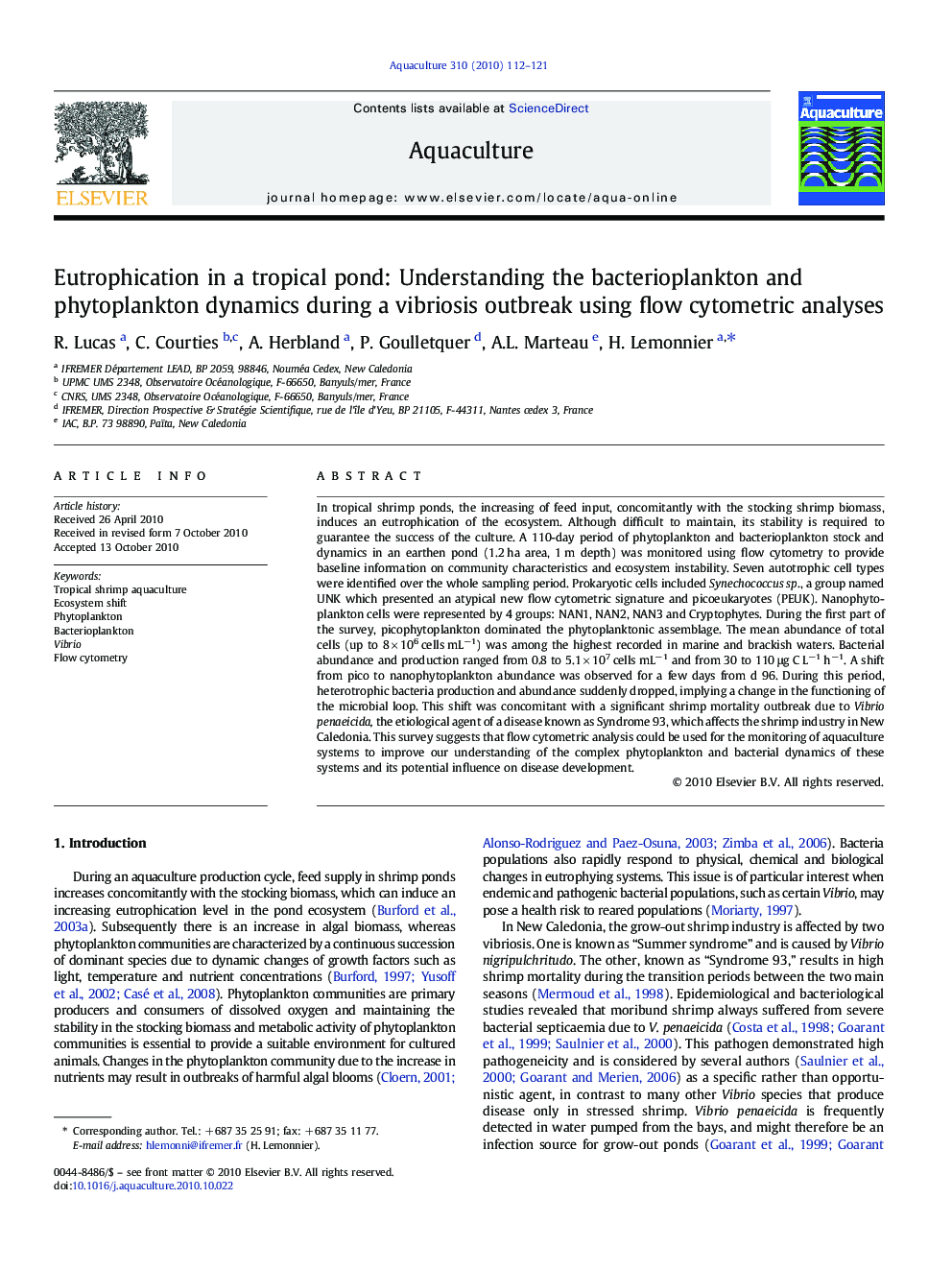| کد مقاله | کد نشریه | سال انتشار | مقاله انگلیسی | نسخه تمام متن |
|---|---|---|---|---|
| 2423423 | 1552916 | 2010 | 10 صفحه PDF | دانلود رایگان |

In tropical shrimp ponds, the increasing of feed input, concomitantly with the stocking shrimp biomass, induces an eutrophication of the ecosystem. Although difficult to maintain, its stability is required to guarantee the success of the culture. A 110-day period of phytoplankton and bacterioplankton stock and dynamics in an earthen pond (1.2 ha area, 1 m depth) was monitored using flow cytometry to provide baseline information on community characteristics and ecosystem instability. Seven autotrophic cell types were identified over the whole sampling period. Prokaryotic cells included Synechococcus sp., a group named UNK which presented an atypical new flow cytometric signature and picoeukaryotes (PEUK). Nanophytoplankton cells were represented by 4 groups: NAN1, NAN2, NAN3 and Cryptophytes. During the first part of the survey, picophytoplankton dominated the phytoplanktonic assemblage. The mean abundance of total cells (up to 8 × 106 cells mL−1) was among the highest recorded in marine and brackish waters. Bacterial abundance and production ranged from 0.8 to 5.1 × 107 cells mL−1 and from 30 to 110 μg C L−1 h−1. A shift from pico to nanophytoplankton abundance was observed for a few days from d 96. During this period, heterotrophic bacteria production and abundance suddenly dropped, implying a change in the functioning of the microbial loop. This shift was concomitant with a significant shrimp mortality outbreak due to Vibrio penaeicida, the etiological agent of a disease known as Syndrome 93, which affects the shrimp industry in New Caledonia. This survey suggests that flow cytometric analysis could be used for the monitoring of aquaculture systems to improve our understanding of the complex phytoplankton and bacterial dynamics of these systems and its potential influence on disease development.
Journal: Aquaculture - Volume 310, Issues 1–2, 22 December 2010, Pages 112–121